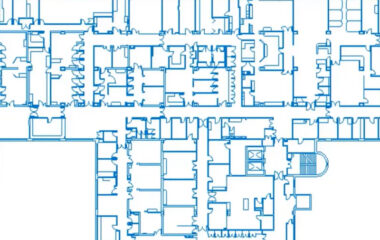Featured in Canadian Facility Management & Design, Kelly Widger, General Manager of SWG North America, discusses the Canadian P3 market and analyses the role of technology, particularly Building Information Modeling (BIM) and digital twins.
Canada’s public-private partnership (P3) market turned 30 last year. In those three decades there have been more than 300 projects across the country, totalling around $139 billion in value. The model has been used to build, operate, and maintain hospitals, schools, highways, railways, courthouses, bridges, and water and wastewater plants.
P3s are suitable for long-term public infrastructure projects because they allow underfunded and overstretched public authorities to transfer risk to private sector specialists, often integrating key delivery elements, and gain access to outside capital. This helps costs from overrunning, a constant feature of public sector project lifecycles.
But the P3 market hasn’t been all smooth sailing. At the Canadian Council for Public-Private Partnership annual conference last year, it was clear that the model does have its challenges. A common fear we hear is that P3s are just too complex, a reputation certainly undiminished by the last three years of challenges, including a global health crisis, major supply chain disruption, labour shortages, inflation, and rising commodity prices.
Tech-forward
With the right technology implementation, systems, and processes, P3s don’t have to be complex. The key, as is so often the case, is data: high-quality, objective, and accessible data on performance that ensures every stakeholder has visibility.
Public authorities are under constant pressure from taxpayers to spend responsibly, so they need to know that performance criteria are being met and that the data they see is fully auditable and transparent. Too often, service providers are penalized with deductions because they cannot adequately monitor or measure what they are doing.
That’s where technology comes in. In the past, facility managers used off-the-shelf software to manage all the operational contract elements. Now, a combination of building information modelling, the emergence of digital twins, and top-end integrated workplace management systems (IWMS) with payment mechanism software integration provide extra layers of data integrity, accuracy, and auditability.
Increasingly, this kind of technology adoption is happening across more high-tech sectors such as healthcare and transit, but also traditional sectors such as schools, offices, and other public buildings.
Better with BIM
Building Information Modeling (BIM) allows organizations to streamline the transition from construction to building operation, derive cost savings, and improve carbon performance in the long term through open shareable asset information. Facility managers can quickly and cost-effectively laser scan existing environments and use this data to create BIM models, aiding decision-making long into a building’s operational life. This means that BIM can deliver significant benefits for long-term projects, especially where contact terms necessitate transparency and performance over periods of up to 25 years.
Paid in full
By integrating BIM with IWMS and payment mechanism (paymech) software, stakeholders can ensure better transparency across the whole P3 contract lifecycle. Paymech technology gives confidence to all parties that the project can operate according to the terms agreed, providing reports and trend analysis of service failures, deductions, and rolling threshold values.
What’s more, aligning BIM with the contractual terms provides users with clearer information, enabling them to deliver on time and within budget, adhere to compliance, and minimize deductions. For FM service providers, integrating BIM with an IWMS enables more effective maintenance regimes as well as maintaining a comprehensive, fully up-to-date BIM model once the contract comes to an end and the building is handed back to the public sector client.
Digital twinning
Smart buildings represent the next leap in innovation for P3s and broader building lifecycle management. Once the BIM model gains access to continuous data, such as through sensors, it becomes a digital twin. BIM integrated with IWMS software provides essential data, including classifications of each space, minimum and maximum temperature requirements, types of materials and details about each asset.
While some new technologies naturally replace others, as IWMS replaces spreadsheets and paperwork, digital twins are built on BIM and do not replace it. Both are built on 3D models, but digital twins represent more advanced modelling. For facility teams looking to use sensors, the BIM model helps them plan their locations and visually understand the data from them. As more data is added to the model, the more easily facility managers can diagnose and fix problems – even before they become apparent to the building’s occupants.
With access to real-time data, digital twins compile it all to form a virtual replica of the building’s state in real time. Instead of viewing data from various sources on multiple reports, the digital twin can be used to view performance, identify trends, and detect building errors – in the same place.
Digital twins can also be used to test different scenarios – like the impact on air quality of a new asset or how cooling systems would cope with more people in the building. This reduces the impact of disruption or dips in performance of the ‘live’ building environment.
The P3 model remains an undeniably effective way to build and run key public infrastructure and that won’t change, especially as public sector facility managers face increasingly tight fiscal conditions. Technology will continue to guide how P3 contract management software needs to operate, and the shift to more sophisticated tools and sources of advice will only gain pace.
 UK
UK






